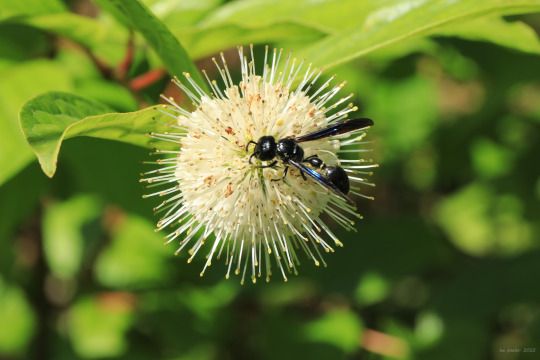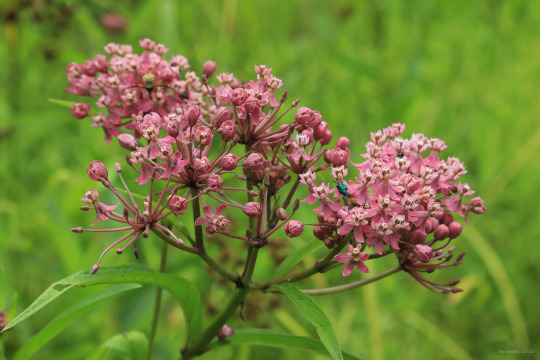#tibbs run preserve
Text



Shameless opportunist,
Bequeath your heathen seed
To impoverished clay and dirt
Who would have guessed
That one day would sprout
This starry-eyed flirt,
Giddy harlot born of worthless dirt.
I freely give thy heart to thee, Rose Pink (Sabatia angularis), nom de plume Rose Gentian.
#appalachia#vandalia#west virginia#wildflowers#flora#summer#rose pink#rose gentian#tibbs run preserve#favorite summer wildflowers#more bad nature poetry
83 notes
·
View notes
Photo

#Repost @nationalblackguide • • • • • • RP @unitedblacklibrary - Two Maryland Black Women Created Beaches Exclusively For African-Americans Between the 1930s and 1960s During the 1900’s Black Americans were under #JimCrow laws and segregation but two women in Maryland made it their duty to help Black people. A Black entrepreneur Frederick Carr bought over 100 acres on the #ChesapeakeBay and gave some land to his four daughters. Two of his daughters Elizabeth Carr and Mary Florence Carr Sparrow who used the land to create beaches for African-Americans. “When I was growing up, Ocean City was segregated,” Jackie Tibbs Copeland, the Director of the Reginald F. Lewis Museum told Fox 5 DC. “I remember being in the water and there was a rope there with balls on it and you knew you couldn’t go beyond the rope because you knew on the other side of the rope was the white area.” Carr’s and Sparrow’s beaches were listed in the #GreenBook, which detailed several places where it was safe for African-Americans to go an alternative to all “whites only” beaches. Various entertainers who visited Carr’s Beach included Count Basie, Ella Fitzgerald, Chick Web, Duke Ellington, Ray Charles, James Brown, and Sarah Vaughan. “The slogan was ‘black feet in white sand.’ That was so empowering and no one could tell you to sit down or stand up. You could just come out and enjoy the Chesapeake Bay. Enjoy the music, enjoy the food, enjoy the fellowship,” Vince Leggett explained according to the news station. “Just to see people of color in charge running something was just very empowering to a downtrodden people.” Leggett who with Carr’s Beach Project, which is working to preserve the history of the beaches although some of the beaches no longer exist. #Melanin #BlackWomenRock #BlackExcellence #BlackWomen https://www.instagram.com/p/B56GU8IFxAk/?igshid=mnkai5mgr5sw
2 notes
·
View notes
Text
Will the Circular Economy Save the Planet?
Will the Circular Economy Save the Planet?
The vision of industry in harmony with nature catches on with capitalistsDecember 23, 2020
Elizabeth L. Cline
IN THE SUMMER OF 2019, William McDonough walked onto a stage at a Marriott hotel in Minneapolis wearing what he called the world's first circular pair of jeans. He was speaking at Circularity 19, North America's first major conference dedicated to "turning circular economy concepts into profitable opportunities." In the audience were Fortune 500 CEOs, investors, city managers, and government officials from around the world.
The apparel industry churns out about 5 billion pairs of jeans each year in a resource-intensive process; making a single pair requires at least 800 gallons of water and is responsible for the release of 20 kilograms of CO2 equivalents (comparable to charging your phone about 2,550 times). Add to that about a third of a cup of chemicals to achieve the colors and distressed look consumers have come to expect.
Unlike standard jeans, McDonough's duds were manufactured as sustainably as possible. The thread, care labels, pockets, and interlinings, normally made of polyester, were 100 percent organic cotton, and all the dyes, stabilizers, and finishes were made from minimally toxic chemicals. But the real breakthrough was the jeans' stretch fiber—a blend of denim and a proprietary elastane that breaks down in soil without releasing any harmful toxins and can be easily recycled. McDonough pulled the denim away from his leg and let it snap back into place. "Twenty years," the lanky, silver-haired architect told the audience with a broad smile. "That's how long it took us to get an elastane that's biocompatible." The result of a collaboration between McDonough's circular economy foundation Fashion for Good and the European fast-fashion chain C&A, the pants were already available to consumers for the reasonable price of $35.
The fashion industry is notoriously wasteful, consuming roughly 108 million metric tons of nonrenewable resources each year, from pesticides and synthetic dyes to coal and oil. Only about 1 percent of all textiles are recycled into new clothing. The majority—more than two-thirds of textiles—are either incinerated or tossed into landfills.
These problems are hardly unique to the fashion industry: Our entire economy is built on an inefficient and dangerous system of resource extraction. In 2017, the world passed a grim new annual record of 110 billion tons of resources consumed—from gravel and cement to fossil fuels, metal ores, and timber—an 8 percent increase from just two years before. According to the consultancy Circle Economy, a scant 8.6 percent of materials get reused.
McDonough and other proponents of the circular economy aim to change all this. They promulgate a vision of industrial manufacturing that is less harmful to the environment because materials are continuously being used and reused. In their view, humanity's polluting, extractive legacy is merely a design flaw that can be engineered out by mimicking Earth's naturally circular systems.
Over the past decade, the idea of shifting the economy away from a linear model to a circular one to solve our environmental woes has taken hold in corporate boardrooms and government offices around the world. Last June, leaders from the World Economic Forum, the European Parliament, Fortune 500 companies, and environmental groups endorsed the circular economy as a way to restore the environment and promote growth in response to the coronavirus pandemic. Google, Amazon, Coca-Cola, IKEA, Unilever, and H&M have all rolled out ambitious plans to go circular. The United Nations identifies circularity as a key pillar of its Sustainable Development Goals.
While a global plan to become more sustainable sounds like progress, the circular economy is a huge and fuzzy concept, and it can be hard to pin down how exactly it translates into practice. A 2017 research paper on the topic identified at least 114 definitions of the term, with the majority amounting to little more than reuse and recycling. This is concerning because environmentalists have been championing reuse and recycling for decades, but our exploitation of resources has only intensified.
Like other utopian environmental theories before it, the circular economy promises to decouple economic growth from our endless consumption of stuff, but are its proponents really offering a planet-saving paradigm shift, or just another version of something we've tried and failed at for decades?
THE IDEA OF A MODERN SOCIETY built around nature's circular systems first emerged in economist Kenneth Boulding's 1966 essay "The Economics of the Coming Spaceship Earth." In it, Boulding described the urgent need to transition away from an "open economy" of careless resource extraction, production, and consumption to a "closed Earth"—a cyclical economic system that preserves and maintains resources by creating products that never wear out.
In the 1970s, Swiss architect Walter Stahel further advanced the concept of a looping economy in an influential report for the European Commission in which he imagined jobs created around large-scale reuse and remanufacturing of durable consumer goods. Companies would lease everything from tires to lighting to vehicles and recover them for refurbishment and recycling. In the 1990s, industrial ecology, now a widely practiced field of environmental science, was promoted by sustainable strategist Hardin Tibbs, who proposed that economies be built around a "continuous cyclic flow of materials," with the outputs of one industrial system used as inputs for another.
It was McDonough (often called the father of the circular economy) and German chemist Michael Braungart who pushed the concept from academic exercise into mainstream discourse. Many environmentalists, myself included, were introduced to the heady ideas of circularity through their visionary 2002 book, Cradle to Cradle: Remaking the Way We Make Things, which paints a picture of consumer products—from shoes to sedans—that could regenerate ecosystems rather than harm them. "If humans are truly going to prosper," the two wrote, "we will have to learn to imitate nature's highly effective cradle-to-cradle system of nutrient flow and metabolism, in which the very concept of waste does not exist."
Through their environmental consulting firm, MBDC, and their Cradle to Cradle Certified program, McDonough and Braungart have sought to bring their ideas to life. One of my favorite projects was an early concept car for Ford called the Model U, whose parts were designed to be easily disassembled and repurposed. The car top was compostable, the interior was made from recyclable polyester, and the engine was a made-to-last hydrogen fuel cell. Some of McDonough and Braungart's other innovations, including recyclable chairs by Herman Miller and carpet tiles for one of the world's largest flooring companies, are in production today.
The various proponents of the circular economy are inspired by nature's capacity to eliminate waste by transforming it into new fodder for ecosystems (Cradle to Cradle uses the example of a cherry tree's falling blossoms feeding the soil). But a practical guiding principle runs through their theories. "What all of these fields of study and contributions are saying is that resources are finite," says Jennifer Russell, an assistant professor at Virginia Tech and a leading circular economy scientist. "We need to be careful about where we're getting them, how we're using them, and what we're doing with them when we're done with them." It's a straightforward idea, but whether its practical application can make a dent in our resource consumption has yet to be fully tested.
In FALL 2020, H&M, the fashion brand perhaps most infamous for producing high volumes of disposable clothing, debuted the world's first in-store garment-to-garment recycling machine at its flagship location in Stockholm. Shoppers can book a time to watch as a set of eight machines sanitize an old T-shirt, chop it up, then spin and knit it into a brand-new sweater, baby blanket, or scarf. The process takes around five hours but costs at most $16, about the same rock-bottom price as a new H&M sweater.
Responding to decades of pressure from activists and consumers, the fashion industry has seemingly made the most progress applying circular economy principles. Around the same time that H&M unveiled its textile-recycling machine, ASOS, a British fast-fashion company, launched its Circular Collection, featuring reversible T-shirts and unisex suits that are durable enough to be passed between multiple owners on the secondhand market, jeans made from 100 percent cotton so they're easy to recycle, and a zero-waste peasant blouse (no scrap of fabric goes to landfill in its design process). The American shoe company Timberland has launched a line of its iconic yellow boots that are easy to disassemble; 80 percent of the materials can be recycled.
Perhaps more significant (if less technologically alluring), a number of apparel companies are developing business models that revolve around extending the life of the clothes they produce. The secondhand-clothing sector is growing 25 times faster than fast fashion, according to a report by ThredUp, the world's largest online thrift store. Eco-minded brands like Patagonia and Eileen Fisher now refurbish and resell their own secondhand clothing. And consumers are responding to the trend. The RealReal, an online consignment store for designer clothes, became the first unicorn (valued at $1 billion) circular business in 2019.
But the real cutting edge for circular fashion is material innovations that enable fiber and footwear components to be reused over and over again without degrading, keeping materials out of landfills and potentially zeroing out the need for virgin fibers. (Current recycling technology produces lower-quality materials that are usually blended with virgin materials.) We're closer to this science-fiction-sounding scenario than most people realize. Seattle-based start-up Evrnu's NuCycl fiber, for example, is made by turning used cotton into a pulp and drying it into paperlike sheets that can then be dissolved and spun into new fibers. NuCycl yarns can be recycled multiple times with no loss in quality, according to Evrnu founder Stacy Flynn. Clothes made from NuCycl should debut in Stella McCartney, Levi's, and Target stores in 2021. Likewise, H&M is making some of its pieces from Renewcell, a nearly identical technology. These innovations amount to a fraction of the overall output of the apparel industry, but they offer a tantalizing vision of what circular design could look like across the sector. "You've got active reuse systems, you've got active repair systems, and you've got refurbishment that's happening," Russell says. "Fashion is really stepping up and trying to own this space."
Companies outside the fashion industry have also introduced circular economy initiatives in recent years. IKEA has committed to making all of its furniture out of renewable or recyclable content by 2030. The company is rolling out its Second Life for Furniture program, which pays customers for their gently used IKEA furniture and resells it in stores across 27 countries. Coca-Cola, 3M, Procter & Gamble, and Unilever are pouring millions of dollars into recycling infrastructure to "close the loop" on plastic pollution, and Apple is launching a 9,000-square-foot facility in Austin, Texas, to refurbish more of its phones and gadgets.
IT'S HARD NOT TO BE DAZZLED by circular innovations like an in-store recycling machine that spits out a new sweater. But as the circular economy scales up, and case studies emerge in real life, problems with the concept are coming to light.
Circularity promises an exciting world of technological progress where we can have it all—the trendiest jean silhouette, the latest gadgets, single-use plastics—without harming the planet. Some of the world's largest disposable-goods companies are advertising their commitment to circularity as a win-win for consumers and the environment. Levi's SecondHand tagline reads, "If everybody bought one used item this year, instead of buying new, it would save 449 million pounds of waste." And H&M says, "If we use a recycled cotton shirt to make a new shirt, there's no need to grow more cotton." The suggestion is that as long as we reuse and recycle everything, we've "closed" nature's loops and avoided ecological damage. The reality is far more complicated.
To begin with, it's important to note that the business community is promoting circular economy projects involving resale, rental, and even more-durable design to entrepreneurs as an additional revenue stream. A 2016 McKinsey & Company report on circularity frames it as an opportunity to expand markets to a new customer group without cannibalizing existing sales. It estimates that the European economy could unlock about $2 trillion from new circular economy businesses like electronics refurbishment and textile-to-textile recycling and simply from the "increased spending fueled by lower prices" associated with shared and secondhand products. Likewise, the business consulting firm Accenture promises a staggering $4.5 trillion windfall from investing in new circular economy businesses, including those that focus on advanced recycling technology, innovative new recyclable materials, sharing platforms (like ride or home sharing), or subscription models (like fashion-rental website Rent the Runway). Russell concedes that most big businesses that are exploring circularity aren't doing so at the expense of their main revenue streams. "These companies are not abandoning their make-new-products strategy," she says.
What that means is that in fashion and elsewhere, the circular economy is not replacing the linear economy; it's merely running parallel to it. In other words, circularity is being positioned as a way to drive new growth, not necessarily as a way to cut down on the use of raw materials. There's no evidence that any of the large brands embracing circularity are actually using fewer virgin resources overall. The fashion industry is a case in point: It still manufactures an estimated 100 billion garments annually, enough for every human on the planet to buy something new to wear every month. Total production of virgin textiles—whether polyester, cotton, or rayon—hit historic highs in 2019.
What's more, by emphasizing reuse and recycling—rather than reducing production—the circular economy runs the risk of becoming a red herring, enabling companies to increase their environmental impact while appearing greener to the public. The circular economy is essentially riding on decades of public conditioning that has us convinced that reuse and recycling are always good for the planet, but that's not the case. "We've tried [reuse and recycling] over and over again, and it just hasn't worked," says Roland Geyer, a professor in industrial ecology and pollution prevention at the University of California at Santa Barbara and a critic of the circular economy.
The economics and difficulty of recycling complex consumer goods like electronics, cars, and furniture mean that wide-scale refurbishment and recycling of most products remain elusive. But even if industry were to overcome these barriers and finally scale up recycling, virgin-resource consumption still might not decrease. This is partly because recycling itself requires water, energy, and chemicals. It is far from a zero-impact process. In the case of recycling textiles, energy is needed to spin old fibers into new material, then chemicals are required to dye and finish that material into garments, and more energy is needed to ship them to retail stores. A 2018 Quantis report on the fashion industry found that scaling up to clothing made from 34 percent recycled materials would only cut carbon emissions across the industry by a mere 5 percent.
In fact, designing products so they're made to be recycled and reused could drive up overall consumption of virgin resources. In a 2017 paper, Geyer and environmental science and management expert Trevor Zink explain how the circular economy could be initiating a rebound effect. Besides creating new and separate markets for cheap secondhand products that don't replace new products, it could dramatically increase the supply of recycled materials. This would put them in competition with virgin materials, driving the price of both down and the consumption of both up.
Steel, for example, is the most widely recycled material, and yet consumption of primary steel has doubled in the past 20 years. Because the total consumption of resources is growing by about 3 percent every year, it's difficult to make every new thing out of old things, which means recycled material will always be in competition with virgin material. "The whole point, the only point, of reusing and recycling is so we make less new stuff," says Geyer. "And that's just not happening."
Despite decades of enthusiasm about the circular economy, today's world is much further away from being sustainable than when Cradle to Cradle was written. The Model U still hasn't been mass-produced, the amount of carpet landfilled in the United States has nearly doubled, and more than 9 million tons of furniture winds up in the trash in the United States every year. Electronics are now the fastest-growing waste stream in the world.
RUSSELL KNOWS ALL THE potential downsides of the circular economy. She agrees that recycling is "the last thing we want to focus on" and that the whole endeavor could fall prey to greenwashing. Still, Russell maintains that reuse and refurbishment scaled up across society could result in environmental gains, as long as we can figure out how to tame the rebound effects and hold down primary consumption—though she concedes that these are big ifs. "It makes a lot of sense in theory, but the problem is figuring out how to get from where we are now to where we want to be," she says.
Russell also believes that growth remains inevitable under our current economic paradigm. "Unfortunately, companies still have to satisfy shareholders," she says. Until we change that, new businesses are going to start every year, and the circular economy is the better alternative because it's ensuring that new growth comes from lower-impact activities, like refurbishment, resale, and recycling. "People still need to be employed," she says.
So no, the circular economy isn't going to save the world. But according to Russell, it's still a useful framework for pushing for change. She sees it as the training wheels to help our consumption-addicted society begin to move away from its linear ways, a set of principles that could, over time, nudge businesses, shoppers, and even governments toward the responsible use of resources. "It's the thing that's going to help us get through the next few decades—I hope sooner—to change behaviors and make us realize that we have a problem and that we also have the ability to do something about it."
Like Russell, Geyer believes that a circular economy, even one grounded in reuse and recycling, could help us get closer to our ultimate goal, which is to live within the planet's boundaries. But that won't magically happen. Nations and companies will have to commit to constraining virgin-resource usage. "If we're serious about environmental sustainability, we cannot afford for virgin-material production to grow at all, quite frankly," Geyer says.
There are some signs that regulatory bodies are starting to recognize this. The European Union has set requirements for consumer products to be repairable, upgradable, and durable, and the Netherlands, considered a leader in circularity, has set a goal to half its raw-material consumption within a decade. But as of yet, no country has decoupled resource consumption from growth, nor have any consumer-goods companies. So far, the environmental benefits of the circular economy exist mostly on paper.
I RECENTLY READ CRADLE TO CRADLE again, tumbling into its visionary world of industry in harmony with nature. Nearly a hundred pages in, it hit me that McDonough and Braungart's vision doesn't have all that much in common with the circular economy paradigm that's emerged in recent years.
The most impactful aspect of the cradle-to-cradle system is redesigning products and industries from the start to be nontoxic and regenerative, using as much renewable energy as possible along with safe chemicals and materials. Remaking new products from old ones and keeping them out of the landfill is only the final step in a completely transformed industrial process. What's truly circular about McDonough's jeans, it occurred to me, is the fact that they were produced in a way that minimizes harm and they can be safely composted in my backyard. The least impressive thing about them is that they're recyclable, which essentially renders them as feedstock for a wasteful industrial system.
I called McDonough last September to ask him what he thought of the movement that he'd helped spawn. He didn't hesitate to voice his trepidation.
All too often, McDonough said, the circular economy is boiled down to chasing higher and higher rates of recycling without paying enough attention to the types of materials being circulated (like plastics that shed microfibers and come from fossil fuels or textiles that contain hazardous chemicals). "It's all about quantity," he says, whereas Cradle to Cradle is about quality. What does he think about reorganizing the entire business sector around reuse and recycling? "If it's seen as the panacea," he says, "then I think that can be problematic."
And yet, Cradle to Cradle is fiercely pro-growth. McDonough and Braungart argued that all business and industrial growth is natural, that economies, just like organisms, die without it. Producing a lot of stuff is fine as long as that stuff behaves like the blossoms of the cherry tree, falling to the soil and returning to nature. This stance seems naive now, given the explosive rise in disposable consumption since the book was published. Fast fashion barely existed two decades ago.
The notion that we can go on making as much as we want as long as we reuse it all is a myth that we'll have to leave behind if we ever want to realize the dream of a circular economy. "We're already past the carrying capacity of the planet," Russell warns. "Unless we repair something without also buying something new—unless we buy a used coat and don't also buy a new one—we are still perpetuating the same system. We'll just have two different marketplaces, and we'll be buying from both."
This article appeared in the January/February edition with the headline "Will the Circular Economy Save the Planet?"
https://www-sierraclub-org.cdn.ampproject.org/c/s/www.sierraclub.org/sierra/2021-1-january-february/feature/will-circular-economy-save-planet?amp
0 notes
Text
Dodge Charger Fob Keys And Remote Program San Antonio TX

If you broken key in ignition, cleave to program your fobik-key, would like to duplicate a smartkey or cleave to upgrade your metal blade key to a switch blade key, you enter the right article. San Antonio Key Replacement laborers are viable year round adept to come down to your location in no time at all when you call our dispatching center! Our workers range modern break in and entry hardware and key programmers able to neatly figure out a broad portfolio of keys, locks and ignition complications for any Dodge Charger year and model on site, avoiding the towing truck service to the San Antonio TX dealer-ship preserving you time, money and bother.
Dodge Charger keys replacement in San Antonio TX
One of the most essential component of any Dodge Charger is it's keylock structure, which need to be recovered if deteriorated or lost. When this sort of a burden happens we, at San Antonio Key Replacement, in San Antonio TX, are in all respects skilled to organize all types of car key, ignition or lock headaches on site.
Dodge Charger transponder key is specially computed to ignite a specific vehicle and our highly-trained personnel can originate Dodge Charger anti theft system, Tibbe, P.A.T or laser cut keys, besides replace, install or repair any sort of keys, ignition and locks onsite 247.
About Dodge Charger key and lock instrumentation
Dodge is an American continental car-maker based in Auburn Hills, Michigan, the USA Constructed in 1900 by manufacturing trucks, SUVs, mainstream vehicles, minivans and vans.
Dodge started accepting transponder chip keys in 1998. A few outmoded cars keys can be comfortably cloned employing onboard procedure, yet with eminently all current designs the key code is coded and an exclusive diagnostic appliances is required.
Recent designs (since 2007) employs push 2 start electronic ignition system and the Keyless Go as smartkey.
Ignition repair
The ignition switch supplies electricity from your battery to practically all of your car's electrical units and consist of tiny mechanical and electrical elements that ordinarily have tendency to worn down after heavy traffic using the ignition system for many years.
If your Dodge Charger ignition key is broken, key got caught in the key-tunnel and dont turn, ignition key can't turn in the ignition and ignition key is hard to turn, it is probably a signs of decaying ignition switch or key caused by broken springs, loose cylinder pin or foreign object inside the key-hole that can easily cause the ignition cylinder to fail, countering you from bursting your vehicle.
When you drive, faulty ignition cylinder could shut the engine off during driving, which could turn out to be very absolutely dangerous, which is why we urge not to try to repair the ignition cylinder by inexperienced person since it may will bring about a deeper hardship and liability.
The best a person can do facing ignition switch or key issues is to double check you’re in fact trying to turn on your own motor vehicle and ask a car lockman to arrive to your juncture to rekey, repair reprogram the ignition or key which will priced as around $150–$325.
Transponder chipped key make
A transponder is principally antitheft system. With transponder, hot wiring or lock bumping a car isn't as sufficient no more if someone want to steal a car.
The main idea behind an immobilized key lock platform is a microchip hidden usually in the beak of the key, when you slide the key into the ignition break, the tiny chip emits an exclusive ciphered message to the immobiliser. If the car computer system does not identify an appropriate authorization code, the car will not turn over.
Although several models and years car makers hand control board outline to originate a surplus key all alone, car key programming, replacement and repair evolved into being surprisingly expensive comparing to the past and besides, if all keys are missing, the car's computer need to be re-programmed by appropriate key programmer owned by a locksmith or the dealership.
Dodge Charger keyless entry device
Smart keys are an optimum in driver convenience and comfort, you are adept to lock and unlock your doors and furthermore flaring up the car – without even inserting the key. You only need to have it on you, whether in your purse or pocket.
Every time the driver walk by their car, they are recognized by a paired radio-frequency transponder concealed in the keyless entry device. The doors unlock and open when the driver pulls the lock handle. The car runs with the touch of a push-buttons on the dashboard. The push-buttons is replacing the mechanical key by opening the current on the car fuel injection.
Closing the car doors when exiting is just as simple. The driver just presses a toggles on the door lock handle – some smart-keys even lock itself as soon as the driver go's out of reach.
Copy vs lost car keys
The old days of making a car key by purchasing a low cost metal blade key blank and cut at a home depot or a walmart store are over. Nearly all contemporary cars provided with immobiliser and chipped keys besides smart-keys and push-to-start ignition.
The keys compose of an enclosed chip which interacts with the engine control module in the vehicle. If the engine control unit does not detect the authorized key, the vehicle will not start.
This contemporary electronic lock and key instrumentation integrate extra convenience and security and is absolutely effective anti theft instrumentation, however replacing them if they get lost or broken should be done by the dealer-ship or a mobile locksmith with a distinct Dodge Charger key programmer and diagnostic equipment and normally can be pricey.
24hrs car lock out
In the situation that you find yourself with the keys locked in the car, you surely want to use a prompt and credible company!
Only our local lock-picking staff members can fulfill the duty of unlocking your car trunk or door for most car maker, year and model.
Lift your cellphone and call us at (210)598-8120 to get notable car lockout service in the city who is utilizing explicit lockpick hardware and moreover the competence to eliminate harm to the car electrical locks, airbag or power windows structures for your absolute inner peace.
Vehicle locks adapting
Whether your old Dodge Charger key got hijacked, you need an fresh ignition key, you cracked the remote key-fob or you misplaced the key to your Dodge Charger, we have provincial vehicle lock man who deliver Dodge Charger changing services 24 hr. We have a substantial range of keys and locks for Dodge Charger and our personals have plentiful years of in-field experience managing ANY sort key cutting and programming and lock converse services. Alternately to dragging your car to the dealer, call our call centre and an professional will drive to your juncture to get your lock or ignition updated on-site.
To sum up
Our 24hrs mobile lock-smith service let drivers get an adept lock-smith every time they need one. With one phone call! Our staff are operative 24 hours a day throughout the week and wiil arrive to your place of choice to extract your broken key, construct a fresh key, open your vehicle door or repair your ignition switch on premises.
Make sure to have our phone number saved in your contacts for any future day you are running into an emergency lost or broken keys and need an immediate solution.
San Antonio Key Replacement is proud for a prominence as a consistent and a fairly immediate reply and our personals are qualified to perform the mission ensuring total satisfaction for economical price whenever required.. If you’re gazing for Car key replacement service in San Antonio Texas call (210)598-8120 for a reliable local automotive locksmith, who duplicate and replace trunk, door and ignition keys and remote fob made on the spot.
0 notes
Text
The Dark Transat: how to sail across an ocean after total power failure
Could you cross the Atlantic with no power? Valentina Vela did just that on her ARC crossing - she explains how they adapted to life without power, while Chris Tibbs has expert tips on dealing with power failure at sea
A complete power failure mid-ocean is thankfully rare, and it is usually the charging system that fails rather than batteries, writes Chris Tibbs. That said, when we bought our boat the batteries were so poor that once disconnected from shore power they only lasted a couple of hours before being completely discharged.
Nowadays it is unusual to find yachts with only one battery bank and without a dedicated engine start battery. Many of us have experienced selector switchers that can be left in the wrong position, so I prefer a set up so that it is impossible to link batteries like this. One boat I looked after had a paralleling switch to temporarily link all the batteries should the engine start battery not be up to the job. This had to be held in place so it could not be left on; we use a simpler solution and carry jump leads.
Long distance cruising yachts will usually have more than one means of charging the batteries and the majority of cruisers have solar, wind vanes, or hydrogenerators to back up the engine. Whilst these may go through one single regulator, each system will often have its own regulator adding some redundancy and backup.
Get your priorities right
If you have lost power production you need to reduce consumption and prioritise; top of my list is navigation lights – a masthead LED tricolour draws around 0.3A which even on a tropical passage with long nights is less than 3.5ampare hours. It also has the added advantage of lighting up the windex so we can reduce the time we use instruments.
The compass light is also important and this may draw as much or more than the tricolour, but steering at night is difficult without this reference point, particularly without nav instruments.
The Seraphina crew (below) crossed the Atlantic the old fashioned way – paper charts and log books
On an ocean passage like the Atlantic you do not need to know our position at all times, once or twice a day is adequate. This does mean that chart plotters can be turned off, and the GPS used only a couple of times a day to log position. A handheld from the grab bag can be used for this, as can the handheld VHF, as long as you have enough spare batteries.
High on the list of priorities must be starting the engine in case of an emergency; if all the batteries are connected together, as in Seraphina'scase (see right), it may be possible to mechanically split the batteries and use the solar panel (or petrol generator) to charge the engine start battery and keep it isolated for emergency use. I would also look at which batteries were in the best condition and reduce the number of batteries in the bank to try and get a couple of batteries to a reasonable level rather than all of them to a low level. By careful monitoring it should then be possible to prevent a total discharge.
On smaller and particularly older engines there may be decompressors to facilitate hand starting. I've never had much success hand-starting engines but have found it possible with a weak battery to decompress the cylinders, which then requires less power to turn the engine over before dropping the decompressor, as if hand starting.
Whilst AIS is a brilliant invention and I would not like to be without it, it is no substitute for keeping a good watch and in areas of good visibility, particularly in daylight, I would turn it off, or set to 'receive only' to save power. On a dark windy night it can be turned on again but I would rather have two crew on watch and hand steering for safety. Hand steering keeps us alert and I think much better watch keepers. The AIS alarm and MOB is essential, particularly if one person is watch keeping, so a balance needs to be found between conserving power and safety.
Small changes in the daily routine can also help save on power, having your evening meal before darkness will get food preparation and clearing away done without needing lights. Solar powered cockpit lights have become common and these can be used below when making drinks at night or visiting the heads.
Having to rely on a pressurised water system is not great and an additional foot pump is very useful. We do not have a foot pump on our boat so we carry a small syphon pump in case of electric pump failure as it is possible to get to the tops of the tanks and pump it out manually.
You can live quite comfortably on limited power – on my first ocean passage from the Virgin Islands to Bermuda without a fridge we had a very strict rule and only opened the ice box once a day to get food out. Seven days later arriving in Bermuda we still had ice. This may work for a freezer but the fridge would quickly warm and foods spoil. Just like you would not rely on one tank of water neither should you rely on one source of food. It may seem old fashioned but a good supply of tinned food is worth carrying; many have their own liquid which also reduces the dependence on watermakers.
With full-on trade winds, hand steering all the way will tire the crew so when short-handed the autopilot becomes more important to avoid excess fatigue. If you are two handed and restricting your autopilot use then reducing sail or even heaving to for a rest are options, however a good watch still needs to be kept for other vessels.
The Dufour Sortilege Seraphina
A dark transat
In November 2017 I joined the ARC+ on the Dufour Sortilege Seraphina, a 12.5m centre cockpit ketch, writes Valentina Vela.
On 15th November we left Cape Verde on our way to Saint Lucia and the first couple of days of our transat were pretty smooth. But on the early morning of our third day at sea, the battery level was unexpectedly low.
The yacht's core power system was based on seven batteries, one starting and six house batteries, charged by an alternator connected to the diesel engine. As back up, there was a small solar panel and a portable petrol generator.
As soon as we got the first alarm flagging that we had an issue we turned the diesel engine on to recharge our batteries through the alternator. We were still wondering what caused such a high power consumption during the night (maybe radar or autopilot) when we joined the 0900 fleet daily chat on the SSB radio. But, after few minutes of transmission, our SSB switched off. All our batteries were completely flat, although our diesel engine was still running in an attempt to recharge them.
We left the engine running for another few hours but made no progress, so we decided to use the portable petrol generator. Slowly we got some power back into the batteries, and realised that the alternator was not working properly.
The crew hand steered and used a wind vane after power failure left them without an autopilot
For two days we kept testing and attempting different repairs, using the generator to produce the power required to re-start the diesel engine again and again. During our tests we discovered that the power system had not been implemented as designed: the starting battery was not isolated from the other six house batteries, and all of them were part of the same circuit. So the charging problem was also impacting our engine starting system.
With only two small 4-litre tanks of petrol onboard and a minimum of two hours required to recharge the batteries, using the generator was not a viable option to produce power for the entire crossing. It could only be used from time to time, to avoid damaging the batteries by letting them experience multiple deep discharge cycles in a row (due to the solar panel), or to start the diesel engine in a distress situation.
After a long discussion, we decided to keep going with our transatlantic, despite not having any power, and began putting in place all the workarounds that became our new routine.
Not being able to immediately turn the diesel engine on to complete a recovery manoeuvre was our main concern. Obviously a man overboard situation was the worst scenario an, unfortunately, even the AIS MOB devices installed in all our lifejackets wouldn't be any help without power to run our VHF system. To mitigate such a huge risk, I started wearing my lifejacket and Personal Locator Beacon all the time and routinely clipping myself on at night and during daylight when out of the cockpit (to work at the mast or the bow).
Being unable to use any radio (except a handheld VHF) our only way to send a distress message if needed would be through our sat phone. To conserve its batteries, we decided to turn it on only once per day to download emails with weather forecasts and other notifications from the ARC rally control team.
With no navigation lights, radar or AIS, collision avoidance was another significant safety issue. The risk of heavy weather was another concern because we wouldn't be able to quickly reef the main in the case of an approaching squall because we had an electric winch on the halyard. For the last two points we had no real workaround, only a commitment as a team to be 100% focused all the time when on watch and to put our trust in each other.
Seraphina's route was mapped on the YB tracker – the team finished 4th in their division
More minor challenges including having no sailing instruments to track wind direction and speed, but we quickly improved our ability to feel the wind. We had no electronic plotter, but did have a small handheld GPS powered by standard AAA batteries, combined with a good compass and detailed charts which saw us safely navigate across the Atlantic. We also had no autopilot, but an old-fashioned wind-vane helped steer all the way to the Caribbean.
Life in the darkWith no fridge, we had to hurry to consume all the fresh perishable food and move on to the preserved stores. We had no lights, but our head torches covered basic needs, allowing us to prepare a warm coffee at night as much as double check the sails or rig during night watches.
For the first ten days, the solar panel was able to daily recharge our batteries enough to power the solenoid valves installed on the gas stove and the electric water pump to transfer water from the tank to some empty bottles every day. By day 18 of our crossing, probably because of the progressive decay of the batteries, the solar panel wasn't anymore able to squeeze any power into our batteries. So during the last couple of days, we used a small camping gas stove to cook and manually pumped water out of the tank to fill the bottles.
Arriving safely in St Lucia
The YB Tracker installed onboard had his own battery, so families and friends were able to keep monitoring our daily progress on the YB Racer App. Moreover, the YB Tracker allowed us to send and receive short messages to stay in touch with our families on a daily basis. And, thanks to a small USB solar charger, we were also able to regularly recharge our smartphones, tablets, and an mp3 player for music.
With all these small workarounds in place, on 5th December after 20 days at sea, we safely landed in St Lucia proud of having completed a transatlantic crossing the 'old-fashioned' way.
The post The Dark Transat: how to sail across an ocean after total power failure appeared first on Yachting World.
0 notes
Text

Blake exploring the old waterworks at Tibbs Run Preserve near Morgantown.
#appalachia#vandalia#west virginia#early summer#tibbs run preserve#ruins#human history#natural history#old growth forest#eastern hemlock#tsuga canadensis
55 notes
·
View notes
Photo

The old hemlock forest at Tibbs Run Preserve, part of the West Virginia Botanic Garden.
#appalachia#vandalia#west virginia#winter#snow#eastern hemlock#tsuga canadensis#west virginia botanic garden#tibbs run preserve
86 notes
·
View notes
Photo

Cardinal flower (Lobelia cardinalis), one of the finest hummingbird magnets going.
#appalachia#vandalia#west virginia#summer#flora#wildflowers#lobelia cardinalis#cardinal flower#west virginia botanic garden#tibbs run preserve
90 notes
·
View notes
Photo










Tibbs Run Preserve, Panel 2 of 3. The West Virginia Botanic Garden occupies a portion of the Tibbs Run Preserve at the western edge of the former Morgantown Municipal Reservoir. A number of themed gardens have been planted and lovingly nurtured since its inception in 2000, my favorite being the pollinator garden with its dense stands of Monarda, Rudbeckia, Echinacea, and Asclepias .
#appalachia#vandalia#west virginia#summer#flora#wildflowers#west virginia botanic garden#tibbs run preserve#tibbs run reservoir
97 notes
·
View notes
Photo

Rose milkweed (Asclepias incarnata), also known as swamp milkweed, the last of the milkweeds to bloom in this area.
#appalachia#vandalia#west virginia#summer#wildflowers#flora#asclepias incarnata#rose milkweed#swamp milkweed#west virginia botanic garden#tibbs run preserve
64 notes
·
View notes
Photo




This is one of our glorious native honeysuckles, trumpet honeysuckle (Lonicera sempervirens), also known as coral honeysuckle, blooming its heart out at the West Virginia Botanic Garden earlier today. As I think about the devastation wrought on our native wildlands by the invasive Asian bush honeysuckles (Lonicera maackii, tatarica, and morrowii), I’m amazed and appalled that these horrific imports are still available via mail order and even from Amazon, for Christ’s sake. Indeed, woodlands throughout the Northeast and Midwest are paying a terrible price for some truly irresponsible gardening decisions. If you want a beautiful, cold-resistant climber for a wall or a fence, then go with sempervirens instead - it’s a wonderful choice not only for its beautiful blooms and foliage but for its high wildlife value as well.
#appalachia#vandalia#west virginia#plant native#lonicera sempervirens#trumpet honeysuckle#coral honeysuckle#west virginia botanic garden#tibbs run preserve
61 notes
·
View notes
Photo

Cutleaf coneflower (Rudbeckia laciniata) is also known as goldenglow for very obvious reasons. A rampant colonizer, this herbaceous perennial is one of our tallest and grandest summer bloomers, but it needs lots of open space to thrive. The cozy corner of the the West Virginia Botanic Garden above is a perfect spot for the plant to spread out and erupt in waves of vibrant yellow.
#appalachia#vandalia#west virginia#summer#flora#wildflowers#asteraceae#rudbeckia laciniata#cutleaf coneflower#green-headed coneflower#goldenglow#west virginia botanic garden#tibbs run preserve
52 notes
·
View notes
Photo










Tibbs Run Preserve, Panel 3 of 3. Pollinators and predators, masters and mimics, these are the true caretakers of a summer garden, small miracles barely perceived at the scale of the obvious.
#appalachia#vandalia#west virginia#summer#flora#insects#west virginia botanic garden#tibbs run preserve#leucanthemum x superbum#shasta daisy#rudbeckia hirta#black-eyed susan#coreopsis lanceolata#lanceleaf coreopsis#monarda fistulosa#wild bergamot#beebalm#cephalanthus occidentalis#buttonbush#honey bells#asclepias syriaca#common milkweed#alypia octomaculata#eight-spotted forester#eupeodes americanus#american hoverfly#typocerus velutinus#banded longhorn beetle#eumenes fraternus#fraternal potter wasp
45 notes
·
View notes
Photo



Rosepink (Sabatia angularis), also known as rose gentian and bitterbloom, is one summer wildflower that never fails to fill my heart with joy. You can spot this tall, prodigious bloomer from a mile away. A sun-loving biennial, rosepink produces a dazzling bouquet of the most amazing pink and white flowers with perfect yellow and lime-colored stars in their centers. Native Americans made a bitter tonic from this plant to increase appetite and aid with convalescence from illness - thus its common name. The bitterness of the plant’s leaves also deter deer from browsing it.
#appalachia#vandalia#west virginia#summer#flora#wildflowers#sabatia angularis#rosepink#rose gentian#bitterbloom#west virginia botanic garden#tibbs run preserve
38 notes
·
View notes
Photo










A few more photos of the West Virginia Botanic Garden from this past weekend. Incidentally, the image carved in the tree in the last photo is the idealized version of me, retired and wrapped up in a hammock on a ramshackle farm smack dab in the middle of nowhere, where I lovingly tend to a certain illicit flowering herb in the woods behind a sprawling sunflower patch. I won’t be wearing any clothes either.
#appalachia#vandalia#west virginia#west virginia botanic garden#tibbs run preserve#tibbs run reservoir#self-realization
42 notes
·
View notes
Photo

Partridge pea (Chamaecrista fasciculata), one of Appalachia’s native legumes, is also known as sensitive plant and sleepingplant, because its leaves fold up when touched. Ounce for ounce, this is one of the most valuable wildlife plants in North America, providing seed and cover for a variety of game birds, food for the larvae of cloudless and orange sulpher butterflies, nectar for various insects, and browsing for deer. But for me, the primary attractions are the plant’s bright pop of summer color and gorgeous foliage.
#appalachia#vandalia#west virginia#summer#wildflowers#flora#chamaecrista fasciculata#partridge pea#sensitive plant#sleepingplant#west virginia botanic garden#tibbs run preserve
46 notes
·
View notes